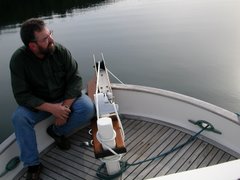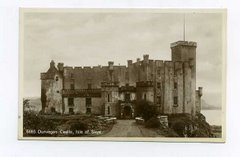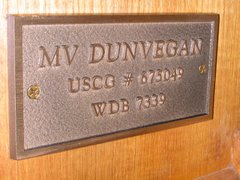



Last January I went to the Seattle Boat Show as I do every year. This year I attended a seminar on fishing for halibut. The presenter was obviously very experienced with catching salmon as well as halibut. He made several equipment recommendations. I am a person who needs very little encouragement to buy more fishing, hunting or boating equipment so of course I came home with more stuff.
I have two very good heavy reels and one VERY good heavy reel. Two very good heavy poles with roller tips and a halibut spear with three tips. I probably would have bought the spear even if I wasn’t ever planning on going halibut fishing just because it is so cool and a guy can never have too many long knives, long guns or long spears.
We were still fishing for rock fish off a small island in Windham Bay and I was still trying to ignore the fact that we were going to have to anchor in 125 feet of water for the night when, all of a sudden, something very big grabbed my lure. Immediately I knew it had to be a big halibut. The fight was on!
Ginger immediately reeled her line in and started preparing to help with my fish. I gave her instructions on setting up the spear in the event I was able to get the thing to the surface. I had already tied a fifty foot piece of line to one spear tip so that part was done. We were trying to decide if we should tie it to a buoy or just cleat it off, which is not recommended.
I was able to get the halibut up to a depth we could see it and we discussed if we should even try to land it. We could tell that it probably was not in the 200 to 300 pound class and so we decided we probably could take care of it. When I say take care of it I mean process and preserve it.
I knew to not let it break the surface because that causes them to go a little nuts and usually head straight back to the bottom. It didn’t break the surface but it did head back to the bottom, three times. Long hard runs, fortunately we were in only 115 feet of water. The forth time it made it back to the surface, it had lost a lot of steam and I was able to hold it.
I handed the rod to Ginger and she braced herself while I grabbed the spear and crawled out onto the swim platform to spear it. I could see that it was hooked by two points of the treble hook right on the lip, not a real solid hookup. The first attempt failed when the spear just bounced off! The halibut didn’t much like that and started giving Ginger a lesson in fighting big fish. I regrouped and Ginger hung on and a second attempt was successful. The spear was place through the middle of the gill plates and deployed as advertised. A benefit of subduing a halibut in this manner is that it allows the fish to bleed out producing cleaner and better tasting fillets.
The halibut was still on the line and its decent could be controlled so we decided to just cleat off the spear line. I rigged another spear point and prepared to place that one. As the second spear went in the halibut fought free from the fishing line by spreading the swivel wide open. By then the fish was tied fairly securely to the boat. I wasn’t happy yet so I tied another line through its jaw and also cleated that off.
We couldn’t get the halibut in the boat and we really didn’t want to anyway. There was plenty of fight left. I would have shot it but the fine folks in Canada make it very difficult to carry a firearm while cruising so we snugged it up and towed it back to our anchorage.
I dropped the anchor in 125 feet and set it, which, by the way, is ten feet deeper than where I caught the halibut! Everything was pretty well stabilized.

























































